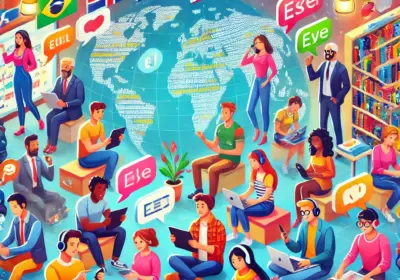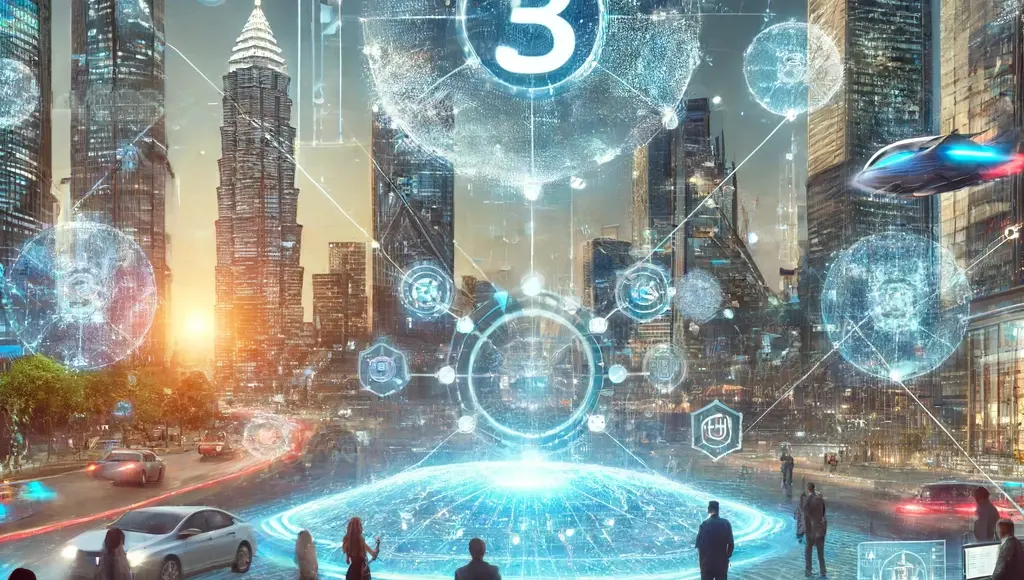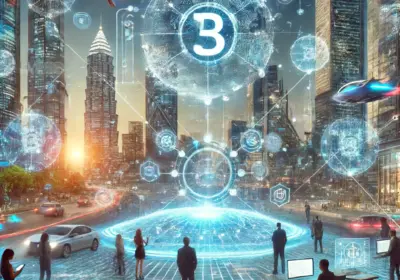The evolution of blockchain technology and the concept of Web3 are pivotal in the transformation of the digital world. This shift towards a decentralized internet aims to enhance user control over their data, creating a secure, transparent, and user-centric digital environment. In this article, we explore the future of Web3 and blockchain technology and the emergence of the decentralized internet.

What is Web3?
Web3 represents a new paradigm of the internet, often referred to as the decentralized web. Unlike Web1, which was characterized by static content, and Web2, known for its dynamic user interaction through social media and centralized platforms, Web3 marks the next stage in the internet’s evolution. It empowers users to control their digital identities and data without relying on centralized authorities.
Key Components
- Decentralization: The hallmark of Web3 is its operation without dependence on a central authority. Blockchain technology ensures that data is stored on a distributed network rather than a central server.
- User Sovereignty: Users have full control over their digital identities and data, providing significant advantages in terms of data security and privacy.
- Smart Contracts: Smart contracts are self-executing agreements with the terms directly written into code. They operate on the blockchain, enabling trustless transactions and automating processes without intermediaries.
- Interoperability: Web3 facilitates seamless interactions between different platforms and services, allowing for a more connected and versatile internet experience.
- Tokenization: Web3 supports the creation and management of digital assets through tokenization, enabling new economic models and the decentralization of various services.
How Blockchain Technology Powers Web3
Blockchain technology is the backbone of Web3. It enables a decentralized network of nodes to maintain a ledger of transactions without a central authority. Here’s how it works:
- Distributed Ledger Technology (DLT): Blockchain uses DLT to record transactions across a network of computers, ensuring transparency and security.
- Consensus Mechanisms: These mechanisms, such as Proof of Work (PoW) or Proof of Stake (PoS), validate transactions and maintain the integrity of the blockchain.
- Cryptography: Strong cryptographic techniques protect data and ensure that transactions are secure and tamper-proof.
Applications of Blockchain in Web3
- Decentralized Finance (DeFi): DeFi platforms offer financial services like lending, borrowing, and trading without traditional intermediaries, using smart contracts to automate transactions.
- Decentralized Autonomous Organizations (DAOs): DAOs operate on blockchain technology, allowing stakeholders to govern projects democratically and transparently.
- Non-Fungible Tokens (NFTs): NFTs represent unique digital assets and have revolutionized the way digital content is created, bought, and sold.
- Supply Chain Management: Blockchain enhances transparency and efficiency in supply chains by providing immutable records of transactions and product origins.
Challenges and Opportunities
Challenges
- Scalability: One of the significant hurdles for blockchain and Web3 is scaling the technology to handle a large number of transactions efficiently.
- Regulatory Uncertainty: The evolving legal landscape poses challenges for widespread adoption, as regulations vary significantly across jurisdictions.
- User Experience: Web3 applications need to improve usability to attract mainstream users who are accustomed to the seamless experience of Web2.
Opportunities
- Data Ownership: Web3 offers individuals control over their data, reducing the dominance of centralized platforms and enhancing privacy.
- Economic Innovation: Tokenization and smart contracts introduce new economic models, enabling decentralized applications (dApps) and services.
- Global Accessibility: Web3 can provide access to financial services and digital tools to populations without traditional banking or internet infrastructure.
The Road Ahead for Web3
The future of Web3 and blockchain technology promises a shift towards a more decentralized, equitable internet. As technology matures, it will likely integrate with existing systems, creating hybrid models that balance decentralization with the practical needs of scalability and user-friendliness. Here are some key trends to watch:
- Integration with AI: Combining Web3 with artificial intelligence could enhance the efficiency and intelligence of decentralized systems.
- Enhanced Privacy Solutions: Innovations in privacy-preserving technologies, like zero-knowledge proofs, will strengthen user data protection.
- Cross-Chain Compatibility: Developing interoperability solutions will allow different blockchain networks to communicate and collaborate, expanding the utility of decentralized applications.
In conclusion, Web3 and blockchain technology are at the forefront of a new digital era. By addressing current challenges and leveraging emerging opportunities, these technologies have the potential to redefine how we interact with the internet, fostering a decentralized, user-centric digital future.
You can find more articles like this here.










